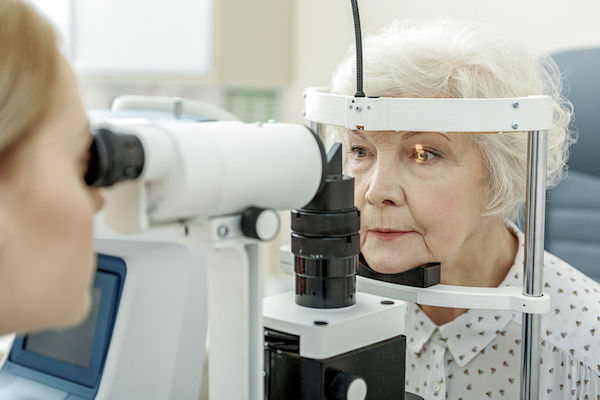A cataract is a painless, gradual clouding of the eye lens, resulting in dull or blurred vision, and even blindness.

According to the World Health Organization, cataracts are responsible for 51% of blindness globally. Cataracts can develop in one or both eyes.
There are a number of factors that increase the risk of developing cataracts. These include:
- Age
- Prolonged exposure to the sun’s ultraviolet rays
- Exposure to radiation
- Smoking
- Alcohol abuse
- Obesity
- Pre-existing medical conditions, such as diabetes
- Prolonged use of certain medications, such as corticosteroids
Cataracts may also occur as a result of trauma or injury to the eye. Some people may be born with cataracts or develop them during childhood – this may be as a result of infection during pregnancy.
What are its symptoms?
Cataract symptoms include the following:
- Blurred, cloudy or foggy vision
- Difficulty with vision at night
- Increased sensitivity to light
- Double vision in one eye
- Changes in the way colours are perceived
- Sudden changes in prescriptions for spectacles
How is it diagnosed?
To establish whether you may have a cataract, your doctor will review your medical history and symptoms, and may perform a number of tests, including a vision chart test that can determine if your eyesight is impaired in any way.
Your doctor will also examine the structures at the front of your eye using a slit-lamp (A slit-lamp makes use of an intense light beam or ‘slit’ to illuminate the cornea, iris and lens.).
A retinal examination may also be performed, during which your doctor will put drops in your eyes to dilate your pupils, allowing for easier examination of the back of the eye (retina) with a specialised device called an ophthalmoscope.
What are your treatment options?
If the cataract has advanced and is affecting your quality of life and ability to perform activities such as driving or reading, removal of the cataract surgically is the most effective treatment. Surgery involves removing the clouded lens, and replacing it with an artificial lens called an intraocular lens.
In instances where an artificial lens cannot be used (due to other eye conditions), corrective glasses or contact lenses can be used to correct the vision. Cataract surgery is performed on an outpatient basis, and with the use of a local anaesthetic in the eye.
Some discomfort is experienced after surgery, with full healing expected within about eight weeks. This is generally a safe procedure but there is a risk of infection, bleeding and retinal detachment.
If you choose not to have surgery, your doctor may recommend you see him for follow-up visits to check on the development of the cataract(s).
Can it be prevented?
As is the case with many eye conditions, the sooner they are diagnosed, monitored and treated, the better. It is advisable to have an eye test at least once every two years, and once a year after the age of 50.
Other ways to reduce your risk of developing a cataract or slow down its effects include:
- Wearing protective eyewear when going out in the sun
- Stopping smoking
- Avoiding smoke-filled areas
- Avoiding excessive alcohol intake
- Maintaining a regular, healthy weight
- Following a nutritionally-balanced diet, including foods rich in antioxidants
For more info
Contact the South African National Council for the Blind on 012 452 3811 or visit www.sancb.org.za
IMAGE CREDIT: 123rf.com
